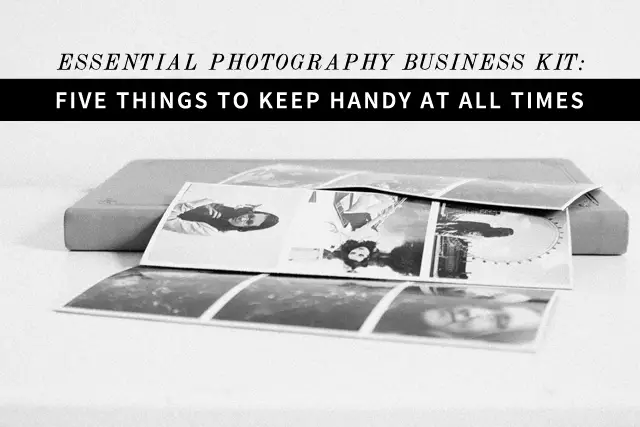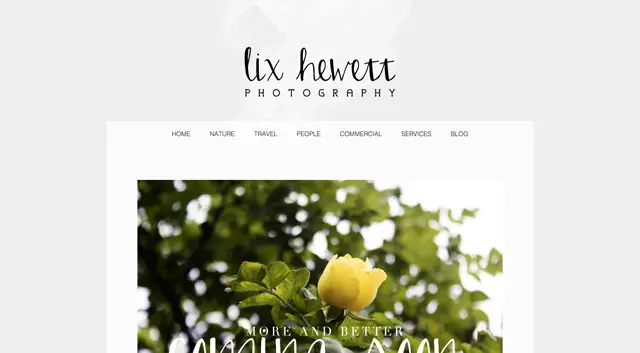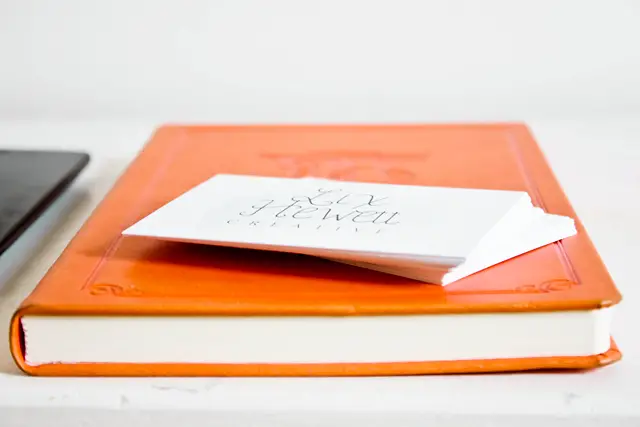Even if you don’t have a business plan, or much of a business to speak of, if you’re going to be or already are a professional photographer, there are certain things you will need and often will be asked for over and over again.

Luckily, you don’t have to do extra work every time to meet these needs — instead, you can put them together once and keep them handy, like tools in a handyman’s box, ready to be pulled out and tweaked whenever they’re necessary.
In this article, I will list a small number of things that I recommend having always at the ready: you may not currently know when you’ll need them or when you’ll be asked for one, but I can tell you with absolute certainty that you will need them, and you will be asked for them.
Portfolio
Just like you need a resume when you’re jobhunting, you need a portfolio when you’re a creative. People need to see what you’ve done in the past to know what you’re capable of doing, what your style is, whether you have the skillset a specific job requires, whether your artistic sensibilities will mesh with theirs, and basically, whether you’re the right person to hire — the person who will create the photographs they need, the way they want them — and maybe even wow them a little bit at the same time.

When it comes to portfolios, we’re spoiled for choice. These days, the most cost-effective, convenient option is to have an online portfolio showcasing the best of your photography. Online portfolios are easy to access, easy to update, and easy to expand or contract as your skillset widens or you decide to focus on certain types of photography. They can be organized into categories and subcategories, making it easy for potential clients to see just what they need to see without trudging through endless material that’s not relevant to them. They can also include information about your services, information about you, and even make contacting you a matter of a click or two.
But even with online portfolios, we are also spoiled for choice. There are endless platforms designed specifically to host photography portfolios; platforms that can be made to host photography portfolios; and of course, if you’re a developer or got your own, you can even code your own platform. A popular choice of software is WordPress, with its friendly user interface and endless plugins and customization options. You can go deep into it, you can hire a designer (psst: I design portfolios!), or you can keep it simple and use one of the myriad themes and some of the myriad plugins out there.
Contracts
You may be a trusting individual and think that no one’s ever going to try to screw you over. Maybe you’ve never had a bad experience in freelancing, and that’s awesome: I’m happy for you. But sometimes — many times — people misunderstand things; they want more than you agreed to give them; they think you got more than they agreed to give you. Contracts are an absolute must to deal with situations like this. Obviously, we all hope they never arise, but contracts protect both the photographer and the client, and they also serve to delineate the services that will be provided in clear terms so that everything is fair and no one ends up feeling like they drew the short straw.
Contracts should include in clear terms who the people signing said contract are, what services will be provided, what the duration and price of those services will be, what the terms of payment are, who will have what rights to what images, and what the photographer will ultimately deliver in terms of tangible (online or off) files.
You should have as many contract templates as types of photography you offer, but even having one template that can be modified in depth can be a huge timesaver. For more information on contracts, I liked 10 Critical Points for Strong Photography Contracts on TutsPlus and 9 Free Photography Contracts on Less Accounting.
Model Release Forms
In the same vein as the above, but worth an additional bullet point as model releases are useful even to photographers who aren’t selling their services, and even if no money exchanges hands. Model releases, like contracts, delineate who’s getting what from whom and under what terms, but they focus mainly on the copyright of the images that come out of a shoot and how they can be used by the photographer and model (or maker of the product, owner of the venue, etc.). As a general rule, model releases are intended to ensure the copyright of the photos remains with the photographer, and the model doesn’t have any claims to royalty fees on any revenue the photographer acquires by using the photos commercially.

That is, however, not always the case: sometimes the photographer isn’t allowed to use the photos commercially or even publicly, or the model is allowed to use them commercially for x amount of time. You put all that in a model release, and then you sign it. And everyone knows who the pictures belong to, and what they can do with them.
Brochures or Offering Lists
When I say “brochures,” I don’t necessarily mean printed ones — I create PDFs for my media kit clients and this is along the same veins. You can of course print these out and have them around, but even a page on your portfolio or a PDF you can attach to an email can be incredibly handy.
Here’s what I do mean by brochures: a list of your services, detailing exactly what’s on offer, what the client will receive and what you charge for it — or the price point at which your packages start. Examples to go along with each offering can be useful and spice up your brochure design. If it’s a long catalog, a cover won’t go amiss. I recommend having your website link in the footer of all pages, or at the very least having a page detailing your contact details, just in case someone comes across the file all by itself and wants to know how to get in touch.
You can have one big brochure with all your services, or small separate ones each outlining one subcategory of work, or even one offering. It all depends on what type of work you do, how wide or narrow your focus is, and of course your design style. One good thing about online brochures is you don’t have to worry about costs if you keep adding pages, and you can always send the latest up-to-date version to a potential client.
Business Cards
I don’t think business cards need an explanation — sure, you can pop down your name and email address on a napkin if you meet someone at an event who needs a portrait photographer, but it’s a lot faster, easier and more convenient to give out a business card — preferably one that showcases your photography and, in addition to your contact information, includes a link to your website and social media. A business card is also more memorable than a scribble, and can be handed in person — by you, by a previous client, by someone you previously handed your business card to — or as part of a shipment, along with a gift — there are plenty of possibilities and, in all of those cases, a business card is a lot less likely to be thrown out with the envelope than a piece of paper with an email address written on it.

There are many business card printers, from cheap ones like Vistaprint to high quality like Moo. Many offer design templates that you can customize with your logo and information, and also allow you to upload and print your own designs. A business card design should be clean and readable and align with your existing brand. If you’re not a designer yourself and you can afford it, I recommend outsourcing the design and starting with a logo. Having a cohesive branding guide from the start can save you a lot of time and headaches, and I think it’s incredibly important for photographers to also have excellent design elements. It’s all about the visuals, after all!
If you have all five of the above things, well, my friend, I think you’re good to go! There’s no shortage of things you can create templates for that will help your business, but the five above will give you a very solid base to work off for your photography business.
Do you have them all? Is there anything else you think is a must that I didn’t include in this list? Feel free to comment with your thoughts!









Moo is not high quality. At all. They are mid range at best.